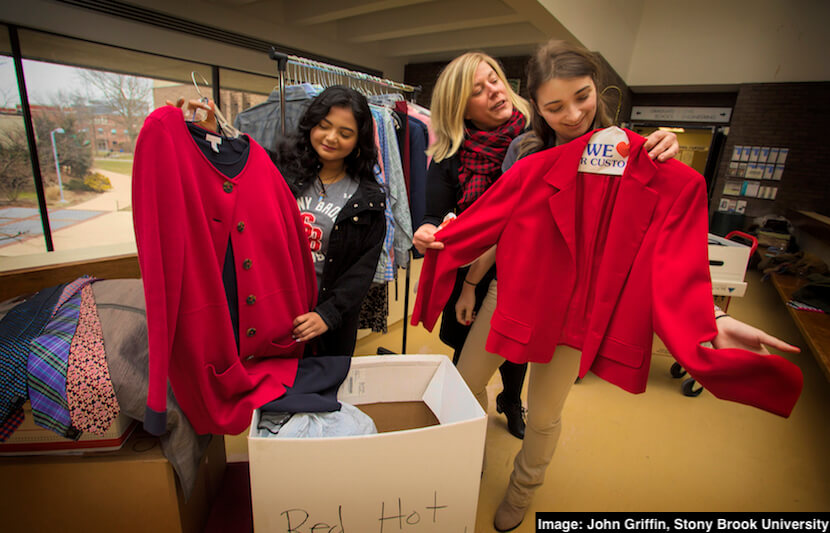Today, a college degree is perceived as a ticket to professional and economic opportunity.
Of the 55 million job openings expected through 2020, only 36 percent of them can be earned with solely a high school diploma. And, on average, Americans with a bachelor’s degree earn 66 percent more than those whose education stopped after high school.
With this in mind, many programs and initiatives are in place to help send students from low-income families to colleges and universities, so they, like their peers from financially-secure families, have an opportunity to succeed.
But finding a way to pay for tuition is just the beginning.
Many students face financial troubles while they are enrolled in school, causing them to skip meals, forego textbooks and even struggle to find housing.
Consequently, colleges and universities are striving to develop ways to ensure students can afford to live while earning their degree.
Stony Brook University is one of the schools leading this charge.
Stony Brook’s Red Hot Career Closet
Most recently, Stony Brook developed the Red Hot Career Closet and Mentoring Program, in which students and community members donate gently used professional attire to help equip students from low-income families with the clothing they need for interviews, internships or their first work experience after college.
“My goal is for Stony Brook students to enter any professional environment with the confidence to display their unique talents and skills,” said Jen Green, the External Scholarships and Fellowships Advisor from the Graduate School at Stony Brook.
“Attaining professional attire is daunting for any student, especially those with financial need, many of whom will be the first in their families to receive a four year degree,” she continued. “These students require not only material goods, but also guidance on professional norms as they take their next steps educationally and professionally.”
Green, who created the initiative, said the idea came to her several years ago while she was working with Stony Brook students who were applying for nationally competitive scholarships.
“I often loaned out, or gave away, my own business professional items that I could no longer use to students who were unable to purchase their own due to financial constraints,” Green said. “Knowing that we all have these sorts of things in our closets, I applied for a Stony Brook Presidential Mini-Grant for Diversity to help make this a university-wide initiative.”
Green and others are currently collecting professional clothing for this year’s pilot of the program, but the official launch won’t happen until next academic year.
“Eventually, we hope to have a designated programming space where students can browse through racks of clothing while receiving guidance from faculty and staff mentors,” said Green.
Additional initiatives
The Red Hot Career Closet, while very impactful, is just the most recent example of how Stony Brook has worked to help students with financial need.
In 2013, Stony Brook opened up its campus food pantry to help feed food-insecure students, staff, and faculty on Stony Brook’s campus.
Each year, the pantry stocks its shelves with more than 10,000 healthy food items. It partners with Stony Brook nutritionists to make sure each customer goes home with the best balance of fruit, vegetables, proteins and starches.
Since 1968, Stony Brook has been working to recruit, enroll, retain and graduate economically disadvantaged students through its version of New York State’s Educational Opportunity Program.
In addition, Stony Brook strives to increase the amount of underrepresented minority and income-eligible college students pursuing degrees in mathematics, science, technology and health-related fields through the Collegiate Science and Technology Entry Program, funded by the New York State Education Department.
While there is certainly more work to be done to ensure that students with financial need have a fair shot at earning a college degree, Stony Brook is off to a good start. Colleges and universities that are struggling to find ways to present care for low-income students can look to Stony Brook as a model.



